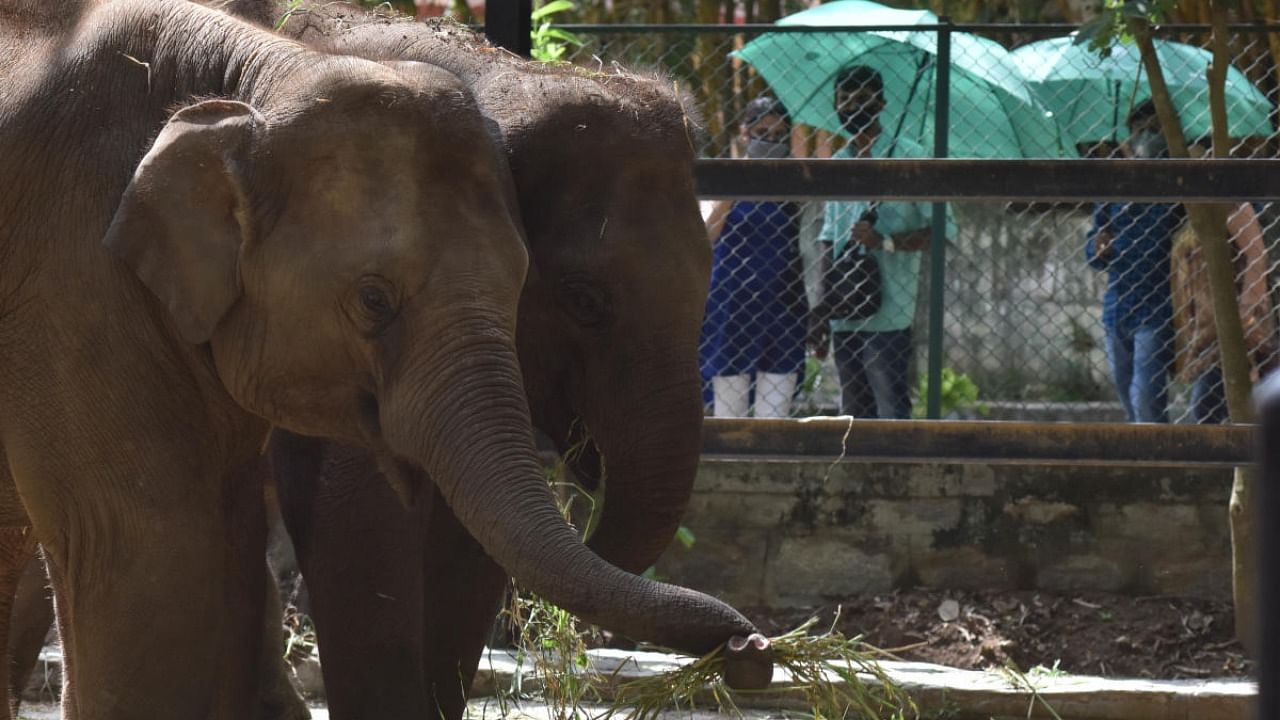Bannerghatta National Park (BNP) in Karnataka is unique in many ways. It is perhaps the only national park in the country that hosts a wild tiger at the doorsteps of the state capital. Besides, it has other large fauna such as elephant, gaur, sloth bear, dhole, leopard, honey badger, the critically endangered vultures and a variety of other mammalian, avian and reptilian species. It hosts some of the last patches of dry evergreen forests in the state. In BNP, I recently witnessed the flowering of queen sago (Cycas circinalis), a rare cycas plant found in the wild only in southern India. This plant itself is another gem in Bannerghatta’s flowering jewels. However, BNP also faces a variety of threats due to its proximity to the ever-growing city of Bengaluru.
Though 260 square kilometres on paper, BNP, in reality, is only about 235 sq km. It perhaps forms less than one-fourth of Bengaluru city’s geographical area. This very odd-shaped national park has already been sliced into several parts, and pieces have been given away for the Bannerghatta zoo, the herbivore and carnivore safari, a government-run tourism lodge, a wildlife rescue centre, and this has been done without following any procedure, such as clearances under the Forest Conservation Act 1980, Wildlife Protection Act 1972, and other legal procedures. Added to this are the encroachments that have taken place for various purposes, including agriculture and human habitation. There are also legally designated villages and religious centres inside the national park. All of these have contributed to the reduction of the size of BNP by approximately 10%.
BNP is a very narrow stretch of wildlife habitat that runs to nearly 55 kilometres from north to south. This is even longer than the lengthiest stretch in Nagarahole Tiger Reserve. However, BNP varies in its width from 11 kilometres to as little as 150 meters. In these narrow stretches, large mammals such as elephants face the highest pressure. Wildlife, especially elephants, are highly troubled by both inside and outside pressures. Round the clock, they are disturbed by vehicular movement, especially large trucks that ferry granite, industrial supplies and finished products to and from various industrial parks around Bengaluru.
In BNP, elephants face the strange harassment of ‘chasing’. Even if these gentle mammoths are seen peacefully grazing at the edges of the roads, they are chased away by both people and by authorities in the name of ‘people’s safety’. If they are seen at the edges of the forests, they are again chased away in the name of crop protection. As BNP borders Tamil Nadu, if they cross over to the forests in the neighbouring state, they are chased back into Karnataka under the pretext that they are ‘not’ from that state! It’s perhaps a very strenuous life to be an elephant in BNP. Elephants, or any other wildlife, do not have administrative or political boundaries. They recognise only ecological boundaries.
BNP is surrounded by many granite quarries, which is one of the major disturbances to wildlife. Quarrying has virtually eaten up all the buffer forests and rocky outcrops and has now brought a clear black and white demarcation between BNP and human habitations. There are various other problems, such as forest fires, timber smuggling, not to forget gun-touting poachers and snaring that’s silently killing the wildlife of BNP.
Despite all these pressures and commercial activities taking place within BNP, a new proposal to open up BNP to safari tourism by a government-run tourism lodge has been mooted. I personally like this government-run tourism lodge as they are one of the very few tourism facilities that employ locals, at least at the lower levels. But I am certainly not an advocate of their safari drives where some of the overenthusiastic naturalists disturb wildlife, especially elephants, to provide some cheap thrill to their tourists.
Tourism, if run in the right manner, can be a good educative tool for wildlife conservation and provide jobs to local people. However, it needs to be capped to a sustainable level. BNP is already hosting tourism in the form of a large zoo, herbivore and carnivore safaris beyond its carrying capacity. Any new addition will add to the existing pressures of fragmentation, habitat loss and degradation. The new safari proposal will also bring in more tourism lodges around BNP and further strain wildlife habitat of the area.
BNP is not only home to wildlife but also an important watershed for the Arkavathi and Suvarnamukhi rivers, and Muthyalamadavu, Rayathmala, Hebbalahalla and Antharagange streams, all of which join the Cauvery. And the Cauvery is the lifeline of Bengaluru. Hence, safeguarding the wildlife and their habitats in BNP is critical for every citizen who calls Bengaluru their home.
Human-induced problems at BNP are brimming beyond the capacity of its existing size and shape, and society should not add another item to this list in the name of tourism.
(The writer is a conservation biologist)
